The body has a level of nitrogen present and this level can be checked with the help of the blood urea nitrogen test. The nitrogen we are talking about is located in the urea and the test can show us if the level is normal or not. The test we have mentioned will be the focus of this text and we will also see what can cause low level of BUN, or blood urea nitrogen, problems this may cause, and the cause of high BUN level as well.
There are several names for this test and some of them are serum urea nitrogen, urea nitrogen and mentioned blood urea nitrogen test. This test will have to be performed in the same time as the creatinine test and this will check if the functioning of the kidneys is proper or not. This may find some kidney disease as well, something of which patient had no idea. Also, dehydration can be detected with the help of these two tests, but the most important for us is the level of BUN, which can be low, high or normal, and this level can be detected by doing these tests.

If you are having kidney problems, or if a doctor suspects of an impaired BUN level, this test will be performed. High blood pressure, swelling located around the eyes and fatigue are the signs of kidney malnutrition, so if you are having these symptoms, you will probably have to undergo BUN test.
- In the more specific enzymatic methods, the enzyme urease converts urea to ammonia and carbonic acid. These products, which are proportional to the concentration of urea in the sample, are assayed in a variety of systems, some of which are automated. One system checks the decrease in absorbance at 340 mm when the ammonia reacts with alpha-ketoglutaric acid. The Astra system measures the rate of increase in conductivity of the solution in which urea is hydrolyzed.
- Even though the test is now performed mostly on serum, the term BUN is still retained by convention. The specimen should not be collected in tubes containing sodium fluoride because the fluoride inhibits urease. Also chloral hydrate and guanethidine have been observed to increase BUN values.
- Creatinine must be determined in plasma or serum and not whole blood because erythrocytes contain considerable amounts of noncreatinine chromogens. To minimize the conversion of creatine to creatinine, specimens must be as fresh as possible and maintained at pH 7 during storage.
- More than 99% of urea synthesis occurs in the liver. Its primary source is dietary protein. In the gut, the protein is converted into peptides and amino acids, more than 90% of which are absorbed and carried to the liver. In the hepatocyte, the amino acids are deaminated and transaminated. The resulting excess nitrogen feeds into the urea cycle to be incorporated into urea. The protein moieties escaping absorption by the small bowel, plus recycled urea, are converted into ammonia by gut flora predominantly in the colon.
- The amount of urea produced varies with substrate delivery to the liver and the adequacy of liver function. It is increased by a high-protein diet, by gastrointestinal bleeding (based on plasma protein level of 7.5 g/dl and a hemoglobin of 15 g/dl, 500 ml of whole blood is equivalent to 100 g protein), by catabolic processes such as fever or infection, and by antianabolic drugs such as tetracyclines (except doxycycline) or glucocorticoids. It is decreased by low-protein diet, malnutrition or starvation, and by impaired metabolic activity in the liver due to parenchymal liver disease or, rarely, to congenital deficiency of urea cycle enzymes. The normal subject on a 70 g protein diet produces about 12 g of urea each day.
- In normal subjects, creatinine is excreted primarily by the kidneys. There is minimal extrarenal disposal or demonstrable metabolism. As a small molecule (molecular weight of 113 daltons), it is freely filtered by the glomerulus. Unlike urea, it is not reabsorbed or affected by urine flow rate. It is normally secreted by the tubules in a small but significant amount (up to 10% of total excretion). Excretion of both urea and creatinine is increased during exercise without producing significant change in serum concentration. The total creatinine excretion in a normal man averages 14 to 26 mg/kg/day, and in a normal woman 11 to 20 mg/kg/day. Excretion declines with age, and is about 10 mg/kg/day in a 90-year-old man. However, it should not vary more than 10 to 15% in a given individual. The amount excreted has been used as a rough index of the completeness of daily urine collection.
- A low BUN/Cr ratio suggests inadequate protein intake, reduced urea synthesis as in advanced liver disease, supernormal excretion of urea as in sickle cell anemia, increased creatinine production as in rhabdomyolysis, or more effective removal of urea than creatinine during dialysis.
Procedure
This is a very simple procedure and a patient only has to restrain from eating high protein foods, since the result may be compromised due to their effect and increase the BUN level. Then alcohol is rubbed on the skin, the elastic band is wrapped around the arm, and then the needle will be inserted.
The needle will take blood out and the cotton ball will be placed on the needle's point of entry. Creatinine ratio among patients older than 12 months should be from 10:1 to 20:1, while those younger than 12 months should have BUN level of 30:1. During pregnancy, BUN level should be from 5 to 12mg/dl, from 8 to 23mg/dl among adults, and children should have a level between 5 and 15mg/dl.
Causes of Low and High BUN Level
The low level of BUN can be caused by excessive consumption of liquids, insufficient high protein food intake, liver damage, rhabdomyolysis, which is muscle injury, excessive use of medications, lung disease, cancer or cirrhosis. Men have higher BUN level then women.
Causes of high BUN level may be excessive intake of protein rich foods, gastrointestinal tract bleeding, heart failure, heart attack, insufficient supply of kidneys with blood, some medication, mental trauma, mental shock, excessive stress, and Addison’s disease. This problem may be caused by urinary tract obstruction, acute tubular necrosis, pyelonephritis, glomerulonephritis or some other disease.
- medlineplus.gov/ency/article/003474.htm
- www.cdc.gov/nchs/data/nhanes/nhanes_99_00/lab18_met_biochemistry_profile.pdf
- Photo courtesy of National Cancer Institute via Unsplash: unsplash.com/photos/egT3xtDu9DQ






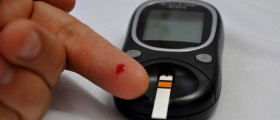
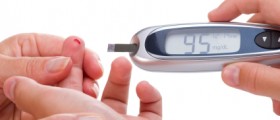

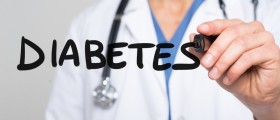



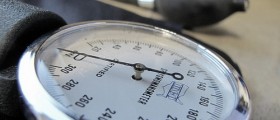


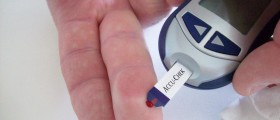
Your thoughts on this
Loading...